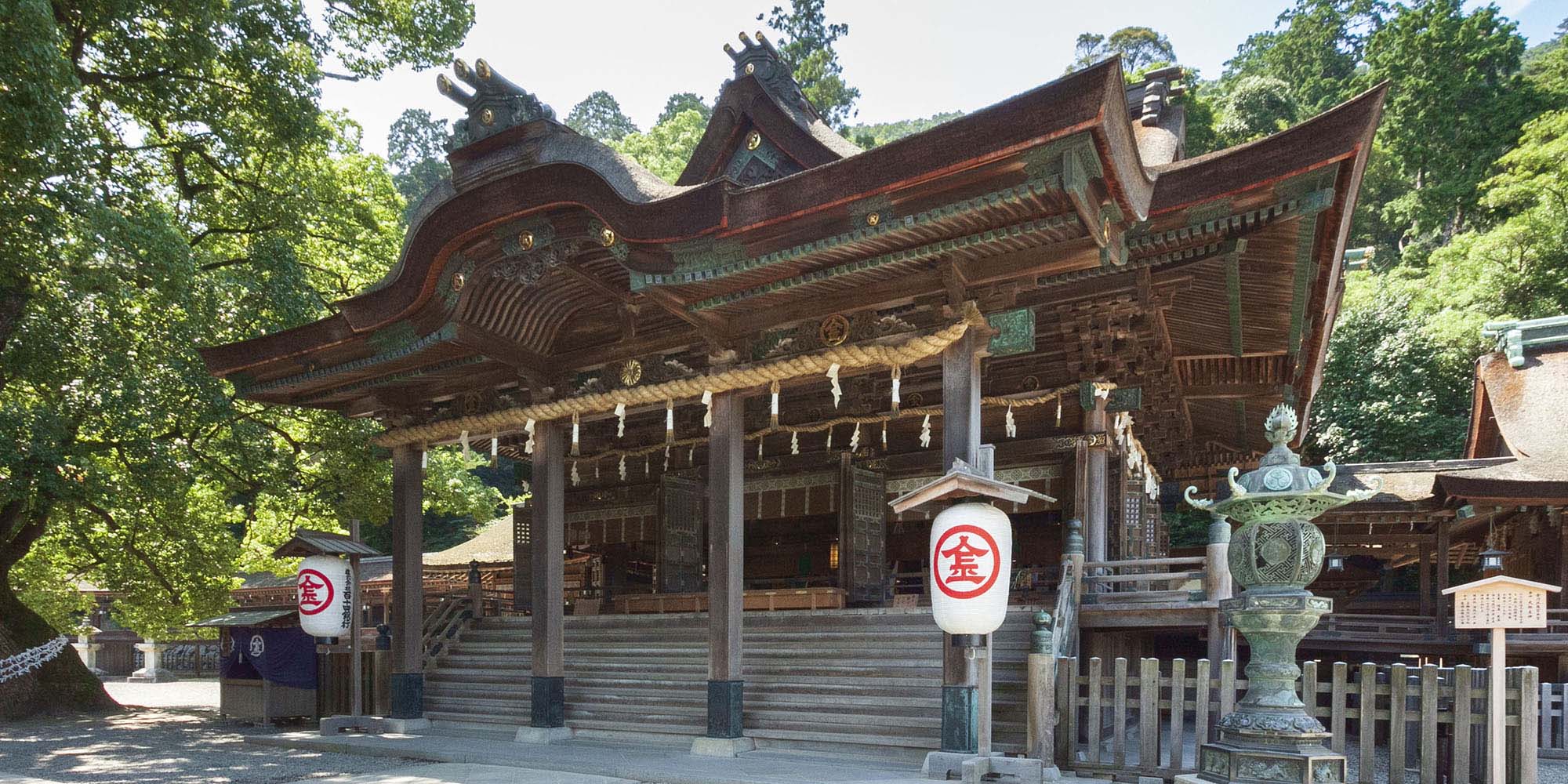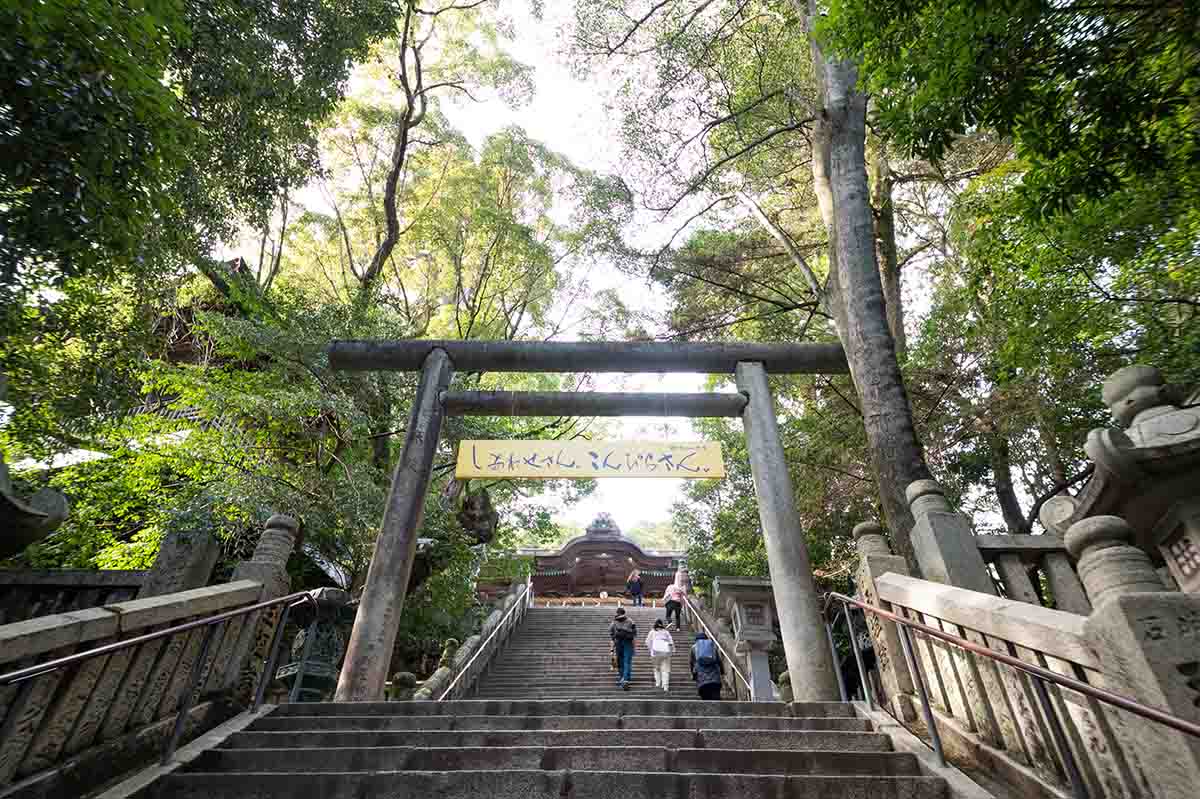


Kotohiragu (Konpira-san)
The arduous 1,368-step pilgrimage to the revered guardian of seafarers.
Known affectionately as Konpira-san, this shrine on Mt. Zozu in Kagawa is famous for its incredibly long and challenging stone staircase, a beloved pilgrimage destination for centuries.
History of the Shrine
Kotohiragu has been a center of syncretic Shinto-Buddhist worship for over a millennium, revered as a powerful guardian of the sea. During the Edo period, a pilgrimage to Konpira-san became an immensely popular goal for commoners, second only to the pilgrimage to Ise Grand Shrine. It was considered a once-in-a-lifetime journey. The long and difficult climb of 785 steps to the main hall, and a total of 1,368 steps to the inner shrine, was seen as an act of profound devotion.
For those who were too old, sick, or poor to make the journey themselves, a unique custom arose: the 'Konpira Inu' (Konpira Dog). People would entrust their prayers and donations to a dog, which would travel with other pilgrims to the shrine on its owner's behalf. These dogs became a famous and beloved symbol of the shrine, representing devotion by proxy and the strong desire of people from all over Japan to connect with the shrine's powerful kami.
The Enshrined Kami
The main deity is Omononushi-no-kami, a powerful kami often associated with Okuninushi, the great nation-builder. In the context of Kotohiragu, he is particularly revered as a kami of the sea, agriculture, and medicine. Historically worshipped by sailors and fishermen to ensure safe voyages and bountiful catches, his blessings are now sought for all forms of transportation safety and for general well-being.
The shrine is also a site for the veneration of the spirit of Emperor Sutoku, who was exiled to the region and died here in the 12th century. This combination of a powerful native god and a revered imperial spirit makes Konpira-san a place of immense spiritual power.
What to See
The main attraction is the journey itself—the long climb up the stone staircase. The path is lined with souvenir shops, restaurants, and historical stone markers. The 'O-mon' (Main Gate) at the 365th step marks the official entrance to the sacred precincts. The 'Asahi-sha' (Hall of the Rising Sun), at the 628th step, is a particularly beautiful building, lavishly decorated with intricate carvings.
The Main Hall ('Hongu') at the 785th step offers panoramic views of the surrounding plains. From here, only the most dedicated continue the further 583 steps to the Inner Shrine ('Okusha'). The shrine also has a notable art museum, displaying works by famous artists like Maruyama Okyo and Takahashi Yuichi.
Major Festivals
The 'Reitaisai' (Annual Grand Festival) from October 9th to 11th is the shrine's most important event, featuring a grand procession where the shrine's 'mikoshi' is carried down and then back up the long stone staircase, a truly strenuous undertaking. Various traditional performances are held on the shrine grounds. The New Year's period is also extremely busy, with thousands of people making the long climb for their first prayers of the year ('hatsumode').
Support Kotohiragu (Konpira-san)
Your participation helps preserve this sacred site for future generations. Every digital offering contributes to real shrine preservation efforts across Japan.
By making an offering, you become part of a global community honoring Japanese spiritual traditions and supporting the cultural heritage that has been cherished for centuries.